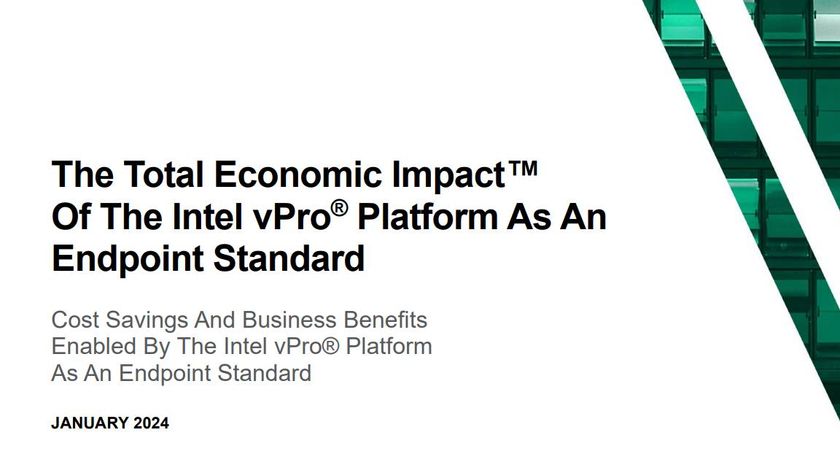What makes the UK a hotbed for the channel?
US companies are flocking to the UK with new channel programmes

Following the creation a strong US channel, companies traditionally move to bring similair initiatives to the UK and Europe, with renewed channel programmes for the region.
But what makes the market so buoyant and most importantly, how have companies had to shift their strategies to address the differences between the US and UK markets?
Simplivity opened up its business into EMEA in April 2013. A year ago, the company started recruiting partners and is now at the point where it has achieved the critical mass needed to support its partners worldwide.
“We offer a programme which drives joint activities enabling us to grow the converged datacentre solutions market together. The channel rollout coincides with the build out of the UK market. You will see that as we break ground in any new geographies around the globe, we establish a strong channel beach head immediately,” says Johannes Kunz, head of channels and marketing, EMEA at SimpliVity.
SimpliVity’s go-to-market model is 100 percent indirect with a two tier model, with a recent signing being irish VAD Espion.
“When we expand into a new territory, our sales and channel go hand-in-hand, as you can’t have one without the other. The UK market is the second biggest market for converged datacentre solutions in EMEA,” says Kunz. “Therefore it is necessary to have the right partners in place who can help us accelerate the business from a regional, horizontal and vertical point of view. As we build out the UK business, we need the partners to be an extension of ourselves.”
Kunz doesn’t see a big difference in the UK and US markets because customers on both sides of the Atlantic have the same problems.
Channel Pro Newsletter
Stay up to date with the latest Channel industry news and analysis with our twice-weekly newsletter
“Both the US and the UK are looking for ways to do more with less as budgets are being squeezed and staff need to drive higher productivity. The only difference then is the size of the market from an opportunity and geographical point of view.”
Kunz says UK partners can leverage all parts of the existing programme on launch day as there is no language barrier, meaning from day one partners can access online training, marketing materials, the partner portal, deal registration, presentations and all other tools.
Partners in both countries are focused on solution selling and see the value in being consultative, Kunz explained.
However, Ross Baker, sales director, UK and Ireland at Trend Micro disagrees with this overview of the market and says the differences between the UK and US are large.
“Other than the first language being English (and we even have to change that in our documentation), it’s very much a buyer’s market in the UK and a seller’s market in the US.”
Because there are so many partners in the UK, they need to find ways to incorporate specialised, managed services, value adds and get creative with financing with pay-as-you-go and subscription models. If the original solution is not the right thing for customer, the partner needs to be agile in their approach.
In the US though, there are only one or two big security players, meaning it’s more straightforward in some ways, despite every state having its own laws, tax implications and time differences.
Baker believes that having a global strategy does work on occasions though. For instance, people knowing Trend Micro is a global company and communicating this to partners and customers reassures them.
Following a consultation with its UK partners in June, Trend Micro will be making small adjustments to its partner programme next year.
Security also plays a part in the differences between the UK and US channel. With end-users increasingly demanding that cloud services are hosted in the UK rather than abroad, many companies have to consider the concerns of such customers.
Jeff Nollette, VP of channels at Egnyte believes the main differences between the US and UK channel markets are the security and regulatory requirements. “For Egnyte moving into the UK, it's important for us to establish a solid partner base to help us understand and navigate those circumstances. Another key difference is that there is a higher percentage of business in the UK and the rest of EMEA is typically done through channel partners, making their importance in that marketplace extremely important.”
US startup Egnyte also recently announced global expansion plans and over the next 12 months, it plans to increase investment in the UK and Europe, which includes local hiring.
“We already have a growing customer base in the region and expanding our channel programme to the UK fits well with our increased channel focus as a company. With the UK redefining data legislation, we feel we’re moving into the UK at a great time as our hybrid approach to file sharing addresses the data privacy concerns and offers UK businesses with a choice for sharing files on-premise, in the cloud or a combination of the two,” Nollette explains.
Since the company was founded in 2007, it has focused on a direct sales model and it’s now shifting its strategy to the channel. The company is targeting a 50 percent channel mix over the next 2-3 quarters and moving to 80 percent channel driven over the course of the next 12-18 months.
In June 2013, Dropbox launched the first stage of its channel programme and in just over a year, Adam Nelson, head of Dropbox channel sales and partnerships says international IT providers have overwhelmingly asked to join the Dropbox Partner Network because their customers so frequently ask for Dropbox for Business.
He says: “To date, we've on-boarded, trained, and equipped over 200 partners outside of North America. Our partners are spread across Europe and incorporate Dropbox for Business into their offerings. While we've just started making headway into the European market, the channel community has welcomed us and provided feedback to help improve the programme.”
Nelson said it will approach each new market with the same vigour and commitment that made it successful in the US, with a business model that accommodates local business needs.
He explained: “Dropbox for Business has the potential to change the way businesses work. By continuing to grow the reach of the Dropbox Partner Network, our partners across the globe can provide their customers with a better solution and be part of our continued growth and success.”
The UK and Europe are key markets for companies in the storage and security sectors, hence why vendors and service providers are bringing channel programmes to the continent.
The disparity between the UK and US markets however, could provide some challenges to these companies, as they attempt to grow their channel in the country and that is why addressing both partner and customer needs is so key.

Clare is the founder of Blue Cactus Digital, a digital marketing company that helps ethical and sustainability-focused businesses grow their customer base.
Prior to becoming a marketer, Clare was a journalist, working at a range of mobile device-focused outlets including Know Your Mobile before moving into freelance life.
As a freelance writer, she drew on her expertise in mobility to write features and guides for ITPro, as well as regularly writing news stories on a wide range of topics.















